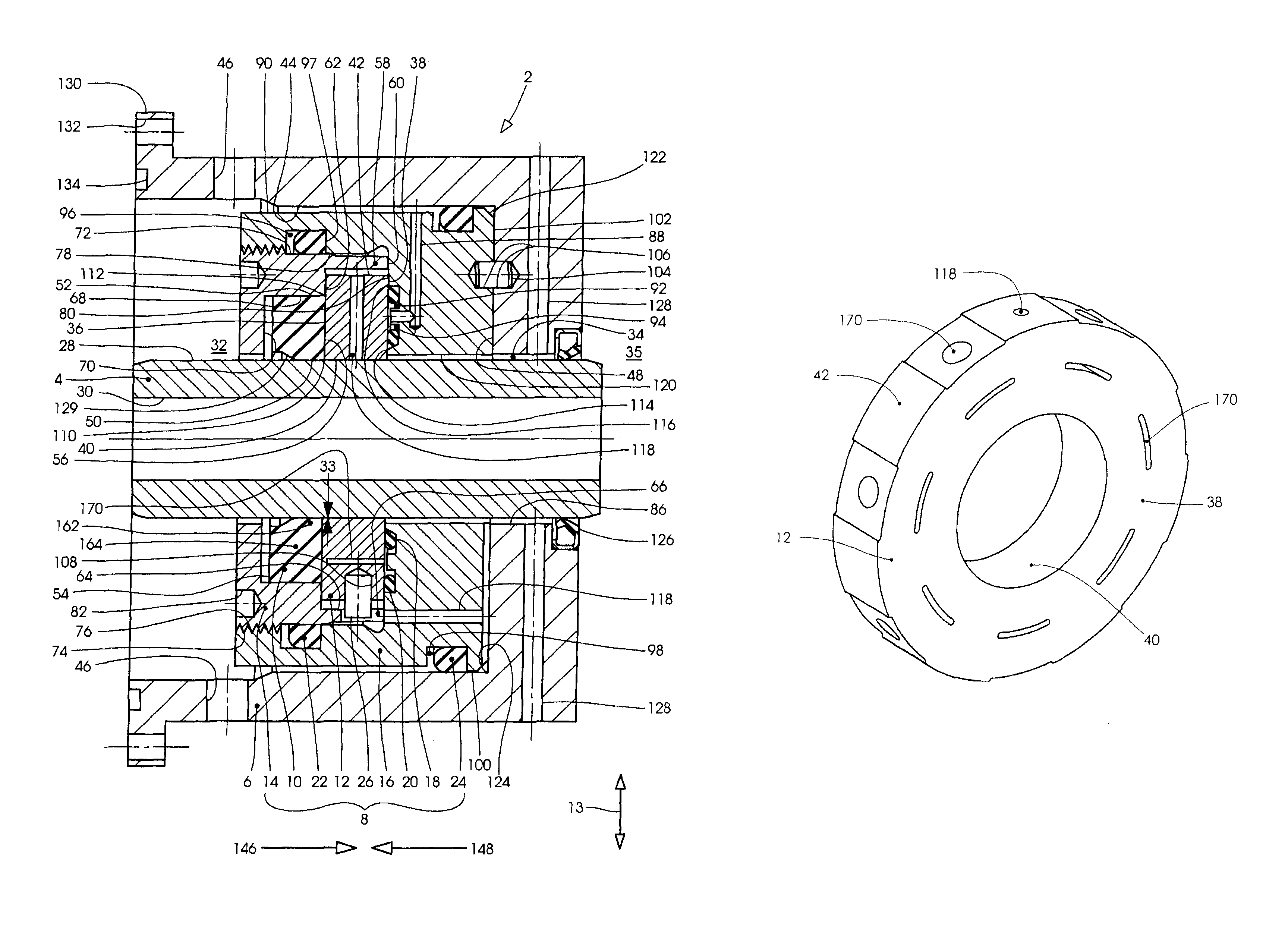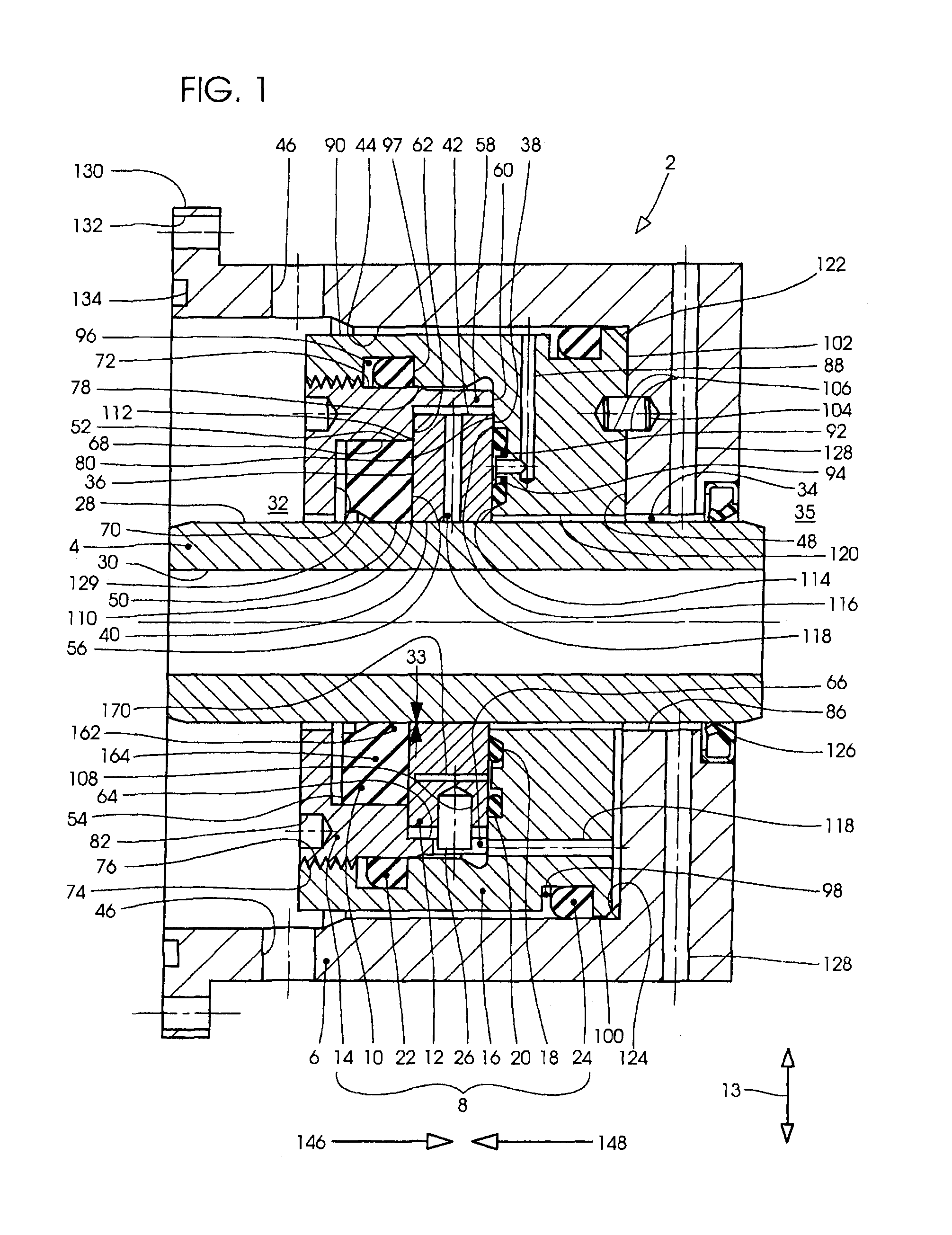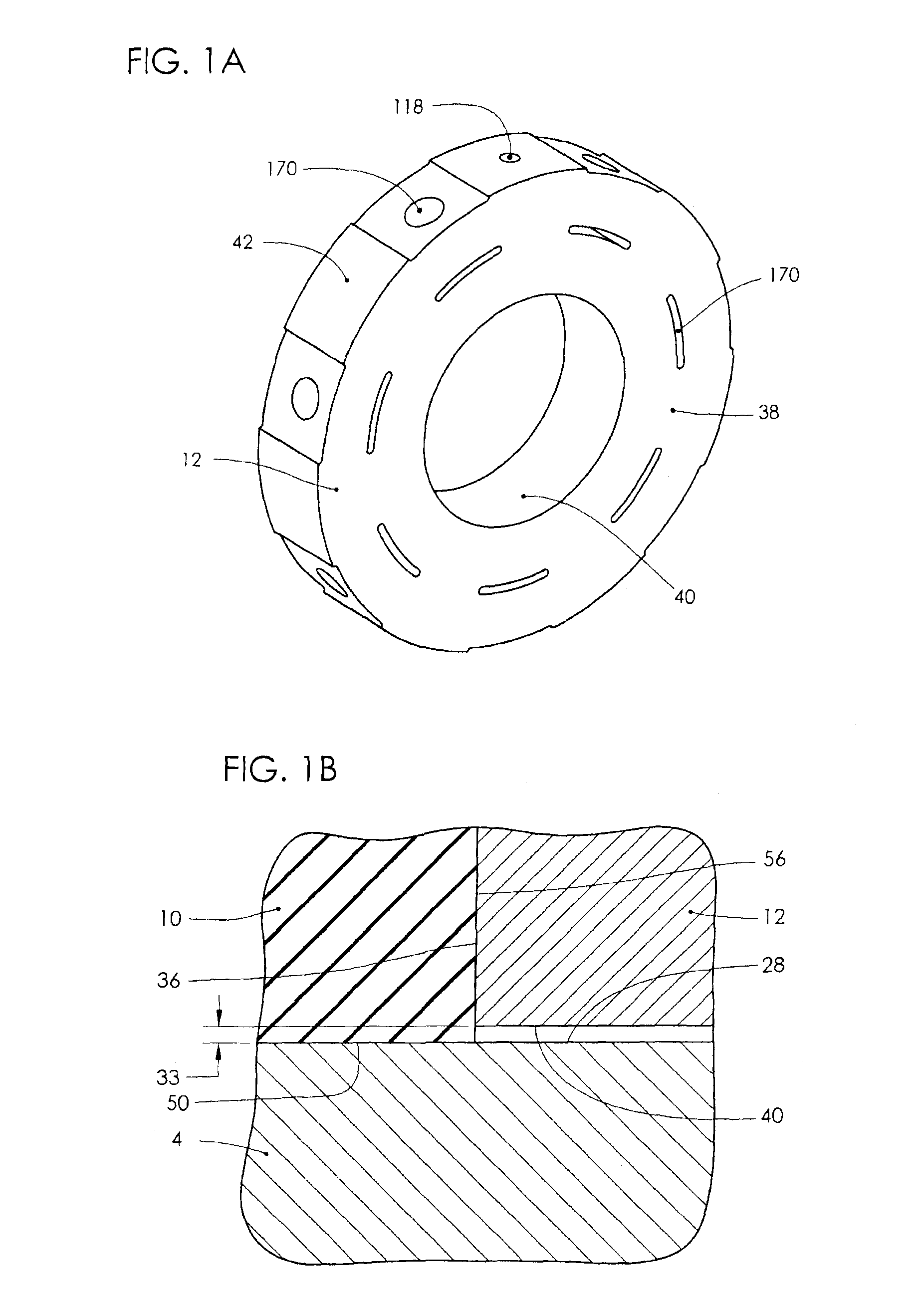Dynamic backup ring assembly
a technology of dynamic backing ring and ring assembly, which is applied in the field of mechanical equipment, can solve the problems of destroying the dynamic seal, scoring and galling the shaft sealing surface, and damage to the housing and the shaft sealing surface, and achieves the effect of minimizing pressure-induced extrusion damag
- Summary
- Abstract
- Description
- Claims
- Application Information
AI Technical Summary
Benefits of technology
Problems solved by technology
Method used
Image
Examples
Embodiment Construction
[0064]The aspects, features, and advantages of the embodiments of the invention mentioned above are described in more detail by reference to the drawings, wherein like reference numerals represent like elements.
[0065]FIG. 1 features throughout this specification that are represented by like numbers have the same basic function. Referring now to the drawings and first to FIG. 1, a longitudinal cross-sectional view of a sealed machine assembly is shown generally at 2, showing the parts located concentrically to one another.
[0066]The machine assembly 2 incorporates a shaft 4 that is relatively movable with respect to a machine housing 6, and is relatively movable with respect to a sealing assembly 8. The sealing assembly 8 is preferably comprised of a number of components including a dynamic seal 10, a backup ring 12, a retainer 14, a bulkhead housing 16, an inner balancing seal 18, an outer balancing seal 20, a retainer seal 22, a housing seal 24, and an anti-rotation tang 26.
[0067]By...
PUM
 Login to View More
Login to View More Abstract
Description
Claims
Application Information
 Login to View More
Login to View More - R&D
- Intellectual Property
- Life Sciences
- Materials
- Tech Scout
- Unparalleled Data Quality
- Higher Quality Content
- 60% Fewer Hallucinations
Browse by: Latest US Patents, China's latest patents, Technical Efficacy Thesaurus, Application Domain, Technology Topic, Popular Technical Reports.
© 2025 PatSnap. All rights reserved.Legal|Privacy policy|Modern Slavery Act Transparency Statement|Sitemap|About US| Contact US: help@patsnap.com



